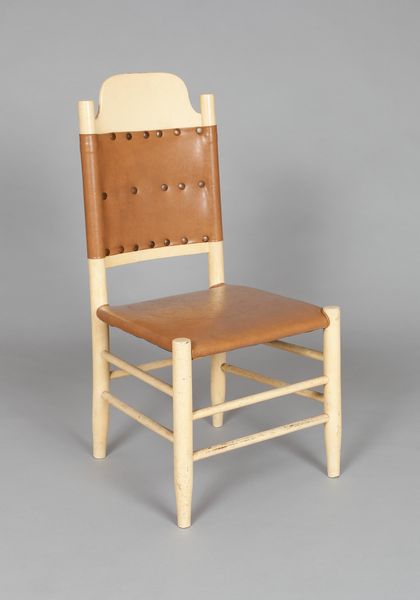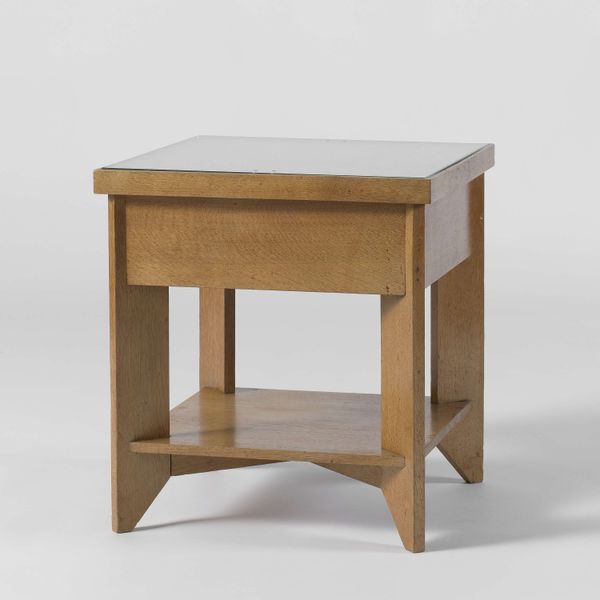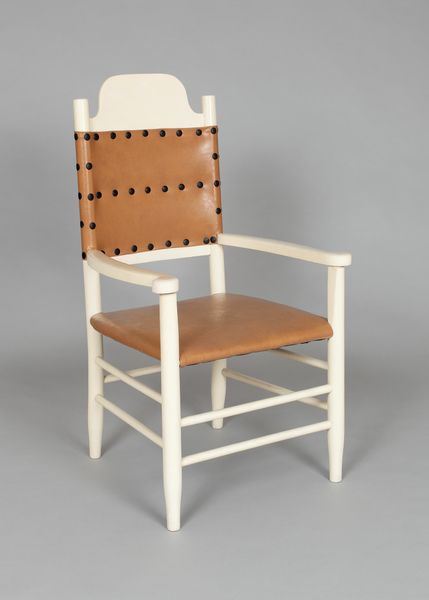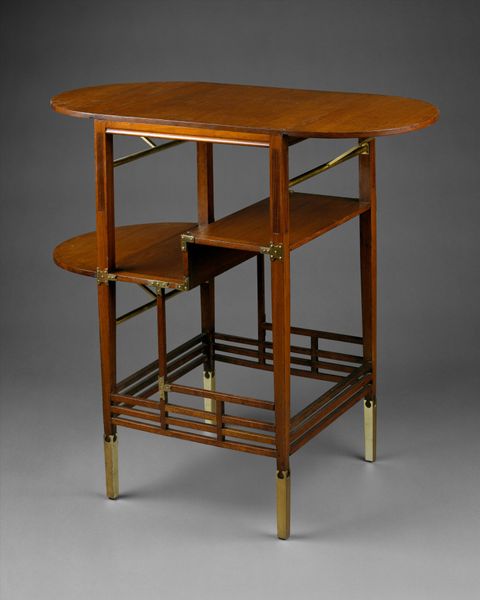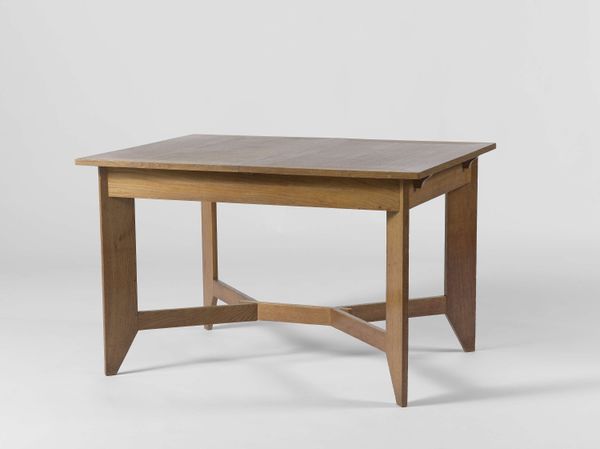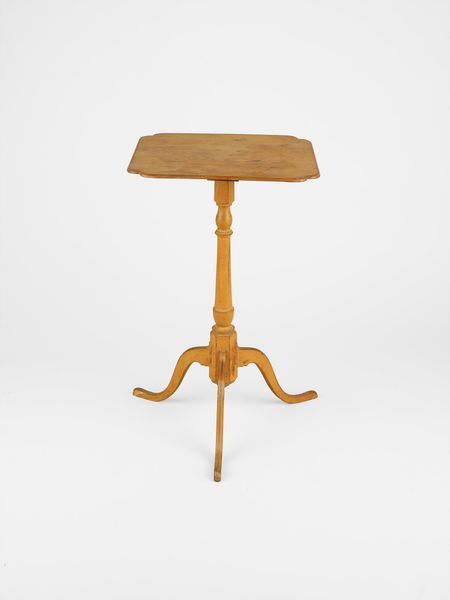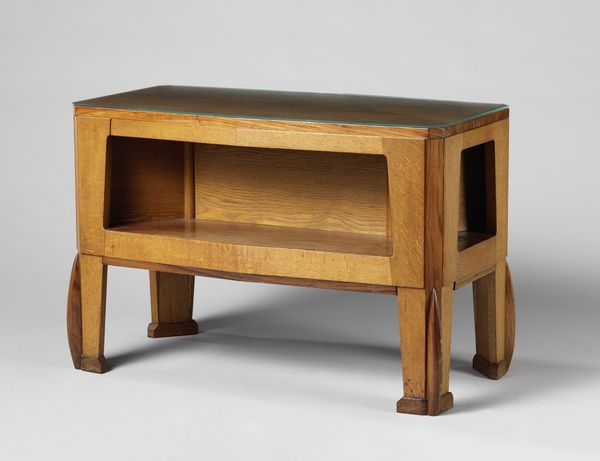
#
art-deco
#
architectural product design
#
furniture
#
united-states
#
decorative-art
Copyright: No Known Copyright
Curator: Here we have a dressing table—or "Chair for vanity with mirror"—created by Norman Bel Geddes sometime between 1929 and 1932. It’s a rather striking example of American Art Deco, currently held at the Minneapolis Institute of Art. Editor: Yes, striking indeed. The pale yellow and chrome palette gives a definite sense of coolness and restrained elegance. The geometric shapes are so clean and efficient; the rounded edges, the tubular stool, even the skyscraper-esque details on the mirror, are all carefully thought out. Curator: Absolutely. Bel Geddes designed stage sets and even cars, envisioning a streamlined, technologically advanced future, and this piece reflects that. Think of the woman using this: the modern, independent woman, increasingly entering public life, with greater autonomy and self-expression. Editor: The emphasis on smooth surfaces and pure form reminds me of the Bauhaus aesthetic, which sought to integrate art, craft, and technology. Everything serves a function; ornament is minimal. Curator: The simplicity has a deceptive impact. A vanity, traditionally a site of ritualized femininity and societal expectations, becomes something almost clinical in its geometry, which can suggest the changing role of women as the influence of the 1920s flapper transitions toward more sober, streamlined practicality of the 1930s. Editor: Perhaps, but the piece also contains what I’d call visual metaphors. Take that mirror, for instance: it serves both to literally reflect an image, and to metaphorically project forward a glamorous lifestyle. The pale yellows give the room lightness and space, qualities also captured in the Bauhaus tradition you cite. Curator: I can see your point. Perhaps the key to understanding this piece is accepting those dueling viewpoints of change versus tradition as central. After all, modernity and industry were advancing at rates never before seen. It’s difficult to pin down how any of it impacted traditional power structures, or if these superficial advancements made any fundamental difference at all. Editor: Indeed, it’s that intersection of structure, form, and projected ideology that gives this everyday object a resonance beyond the purely functional or the simply decorative. It allows us to reconsider objects through a critical, contemporary lens. Curator: And prompts us to keep asking the right questions. Editor: Precisely.
Comments
No comments
Be the first to comment and join the conversation on the ultimate creative platform.

